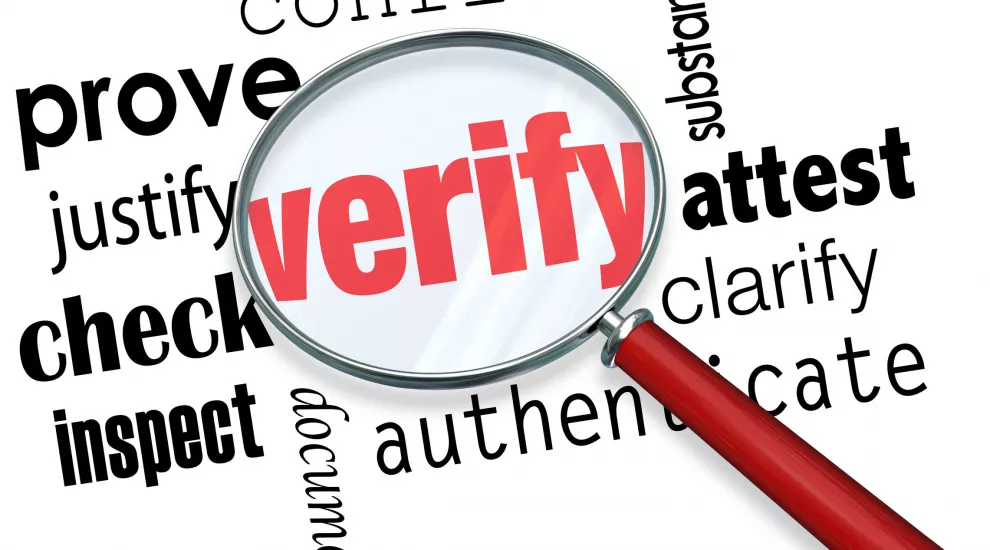
From our Educator Guest Blogger Series
Not enough of us, including our students, are verifying what we consume. There, I said it.
That’s incredibly important now that, in the midst of the Coronavirus pandemic, more and more fake news and disinformation is being shared via social media and beyond.
During a talk I gave recently to school librarians, I recommended that verification be considered as THE 2020 word of the year.
The Oxford dictionary defines verification as “the process of establishing the truth, accuracy, or validity of something.”
Do your students know HOW to verify what they read?
Recent studies have indicated that many of today’s young people tend to believe what they read on social media and elsewhere, anxious to repost, without stopping to verify the information. That’s a problem.
How can you help?
I recently heard someone say that fake news is NOT the problem, but rather the spreading of fake news is. I tend to think that both are problems and both need attention.
Another educator told me recently that her students didn’t care if what they read is fake. If that sentiment is widespread, then we had also better address this apathy.
Have your students encountered “fake news” in their study research? Did they question it; verify it; virally spread it? If they are spreading it, without question, then they are part of the problem.
Questioning is at the HEART of media literacy education. Media literacy is really about critical thinking and critical viewing.The Center for Media Literacy has promoted this list of questions which I recommend you post in your classroom or other appropriate venue.

Here is a recent TIME magazine cover. Do students know who is represented on the cover? Why is he wearing a mask? Are students aware that this cover is a visual representation and not a photograph? Students can also be encouraged to consider the media literacy questions as they apply to this cover.

Analyzing news photos
The media literacy questions can also be applied to images students see in the news. Although they may be exposed to many images, it has been my experience that many don’t stop to consider how the image communicates meaning. Here’s another example. I’ve deliberately omitted the caption. So without context, students must look for clues and make inferences from just the image itself. (Of course, they can search online and locate the image. They can read the caption and identify the photographer.) Where is the photographer standing? Why did he/she choose this camera angle? How does it make you feel?

Encouraging media & information literacy in digital natives
Several new initiatives are urging students to stop, think, reflect and to question. Consider sharing this poster with your students, and, upon return to school, posting it near your computers.

Fact checking: A vital 20th century tool
Many reliable fact-checking websites make it easy for all of us to check whether something we read, see or hear is true. The oldest of these sites is FactCheck.org run by the non-partisan Annenberg Public Policy Center. Another is Politifact.com, a non-profit run by the Poynter Institute—a journalism school and training organization. The Washington Post newspaper has a regular FactChecker column. All of these employ researchers whose job it is to verify and report their findings.

Questioning the politicians & their messages
While we’re in the midst of another presidential campaign season, we will hear many politicians declare something--- which can almost instantly be verified by checking in on one of the many fact checking services.
During my presentation to school librarians recently, I played an ad from the campaign of presidential candidate Pete Buttigieg which featured testimonials from residents of South Bend Indiana, where he is the former mayor. In the middle of the ad the words “Reduced Poverty Rate” were superimposed on the screen, with no attribution.

So I reminded my audience that politicians can say anything in their ads; it’s up to us to not only question but also to verify. In a recent interview, Buttigieg said; "I'm proud of the fact that black poverty fell by more than half on my watch." [One fact checking website found that statement to be mostly false.]
As we move closer to an election primary season and the 2020 presidential election, questioning what we read and hear are paramount considerations.
As more and more images and videos are altered and spread like wildfire, it will be more important than ever that our students stop and verify what they consume.
The question I need you all to consider is, will they?
Resources
- 8 Must Reads Detail How to Verify Information in Real-Time, From Social Media, Users
- Top 10 Sites To Help Students Check their Facts
- Political Campaign Ad Worksheet - Frank Baker invites you to download and distribute this to students as a tool to help them better deconstruct political campaign commercials.
Portions of this blog appeared previously at www.MiddleWeb.com.
Bio
Frank Baker, a long-time media education consultant and author, was recently honored by UNESCO with a 2019 GAPMIL Global Media & Information Literacy Award for his lifelong work in media literacy. He is the author of “Close Reading The Media” (2017), a collaboration between Middleweb and Routledge. He maintains the popular Media Literacy Clearinghouse website of education resources. He invites readers to follow MLC on Facebook and him on Twitter @fbaker.
* Be our next Guest Blogger! Learn more.
Note: This guest blog does not necessarily reflect the views of ETV Education.
